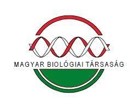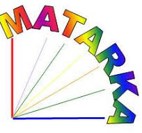A darvak éjszakázóhely-választása a hortobágyi Kondás tavon
Absztrakt
Számos vizsgálat alapján az éjszakázóhelyek biztonsága, megőrzése fontos szerepet játszhat az éjszakát ott töltő fajok populációinak védelmében. Éppen ezért kiemelt fontosságú megismerni, hogy pontosan milyen folyamatok játszódnak le az éjszakázóhelyek elfoglalásakor, vannak-e preferált magterületek, illetve mennyire határozzák meg e magterületek a benépesülési folyamatokat. A darvak kiváló alanyai az ilyen típusú megfigyeléseknek, mert csoportosan pihennek és táplálkoznak, nagytestűek, és éles „krúgató” hangjukról könnyen megtalálhatóak már messziről. E madarak éjszakai pihenőhely használatáról az éjszakázóhelyeken belül eddig kevés információnk van, ezért fontos, hogy megismerjük az éjszakázóhelyre való betelepülés térbeli és időbeli változását, valamint az esetlegesen erre ható zavaró tényezőket, melyek befolyásolhatják a behúzás természetes folyamatát. A vizsgálatainkat 2007-ben végeztük Hortobágyon a Kondás nevű halastavon. Eredményeink alapján az éjszakázóhelyre való tömeges beérkezés ideje a borultsággal van összefüggésben. A tavon elfoglalt helyek térbeli és időbeli elhelyezkedése során megfigyeltük, hogy az első beszálló darvak kijelölik a később használt területeket, és az utánuk érkező csapatok az elsők mellé szállnak. Az első beszállások mintázata jól mutatja a madarak által előnyben részesített területeket: a nádszegélyt, és a középső sziget környékét. Tapasztalataink szerint a fő zavaró tényezőt az antropogén hatások jelentik, mert az esetleges predátorok megjelenése nem zavarta a darvakat, viszont az ember által okozott zavarás jelentősen hatott a betelepülő madarakra.
Hivatkozások
Alonso, J. C. & Alonso, J. A. (1992): Daily activity and intake rate patterns of wintering common cranes Grus grus. – Ardea 80: 343–351.
Alonso, J. A., Alonso, J. C. & Veiga, J. P. (1985): The influence of moonlight on the timing of roosting flights in Common Cranes Grus grus. – Ornis Scandinavica 16: 314–318.
Anderson, J. R. (1998): Sleep, sleeping sites, and sleep-related activities: awakening to their significance. – Am. J. Primatol. 46: 63–75.
Beauchamp, G. (1999): The evolution of communal roosting in birds: origin and secondary losses. – Behav. Ecol. 10(6): 675–687.
Beauchamp, G. (2004): Reduced flocking by birds on islands with relaxed predation. – The Royal Society London 271: 1039–1042.
Cramp, S. (1998): Birds of the Western Palearctic on CD-ROM. – Oxford University Press, Oxford.
Fintha, I. (1993): Autumn Crane migration in Hungary, with a special reference to the recent records. – Aquila 100: 137–150. [in Hungarian, with an English summary]
Grether, F. G. & Switzer, P. V. (2000): Mechanisms for the formation and maintenance of traditional night roost aggregation in a territorial damselfly. – Animal Behaviour 60: 569–579.
Janicke, T. & Chakarov, N. (2007): Effect of weather conditions on the communal roosting behaviour of common ravens Corvus corax with unlimited food resources. – J. Ethol. 25: 71–78.
Johnsgard, P. A. (1983): Cranes of the World: Eurasian Crane (Grus grus). – University of Nebraska, Lincoln.
Lewis, S. E. (1995): Roost fidelity of bats – a review. – J. Mammal. 76: 481–496.
McGrovan, A., Sharp Stuart, P., Simeoni, M. & Hatchwell, B. J. (2006): Competing for position in the communal roosts of long-taled tits. – Animal Behaviour 72: 1035–1043.
Reuven, Y. & Chernetsov, N. (2004): Stopover ecology of migratory Sedge Warblers (Acrocephalus schoenobaenus) at Eliat, Israel. – Ostrich 75(1–2): 52–56.
Richner, H. & Heeb, P. (1995): Communal life: honest signaling and the recruitment center hypothesis. – Behavioral Ecology 7(1): 115–119.
Sonerud, G. A., Hansen, H. & Smedshaug, C. A. (2002): Individual roosting strategies in a flock-living bird: movement and social cohesion of hooded crows (Corvus corone cornix) from preroost gatherings to roost sites. – Behav. Ecol. Sociobiol. 51: 309–318.
Tielman, B. I., Williems, J. B. & Visser, G. H. (2003): Variation in allocation of time, water and energy in Hoopoe Larks from the Arabian Desert. – Funct. Ecol. 17: 869–876.
Tortosa, F. S.&Villafuerte, R. (2000): Habitat selection by flocking wintering common cranes (Grus grus) at los Pedroches valley, Spain. – Etologia 8: 21–24.
Végvári, Zs. (2002): Autumn staging and habitat selection by common cranes Grus grus in the Hortobágy National Park, Hungary. – Folia Zoologica 51(3): 221–225.
Végvári, Zs. & Tar, J. (2002): Roost site selection in common cranes Grus grus in Hortobágy, Hungary between 1995–2000. – Ornis Fennica 79: 101–110.
Végvári, Zs., Tar, J. & Szilágyi, A. (2003): The migration of the common crane in the Hortobágy between 1995–2000. – Aquila 109–110: 51–59.
Ward, P. & Zahavi, A. (1973): The importance of certain assemblages of birds as ‘information centres’ for food finding. – Ibis 115: 517–534.
Wilkinson, G. S. (1995): Information transfer in bats. – Symp. Zool. Soc. Lond. 67: 345–360.
Willis, E. O. (1972): Do birds flock in Hawaii, a land without predators? – Calif. Birds 3: 1–9.
Wright, J., Stone, R. E.&Brown, N. (2003): Communal roost as structured information centres in the raven, Corvus corax. – J. Anim. Ecol. 72: 1003–1014.






